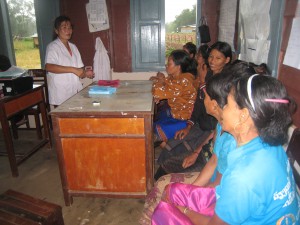First CleanBirth Village Volunteers Trained!
 We just received the most exciting email. What was an idea in July has become a reality in October. Our partner in Laos, Our Village Association, with a local clinic in Ta-oiy Province have executed the first CleanBirth Volunteers Training!
We just received the most exciting email. What was an idea in July has become a reality in October. Our partner in Laos, Our Village Association, with a local clinic in Ta-oiy Province have executed the first CleanBirth Volunteers Training!
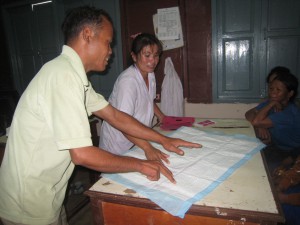
There were 8 participants from 4 villages, unfortunately 7 others from three additional villages were kept away by heavy rains. The participants were:
- Ms. Tha, woman’s union volunteer from SanaengVillage
- Ms. Vae, traditional midwife from SanaengVillage
- Ms. Koab, woman’s union volunteer from PhorbeiyVillage
- Ms. Koun, traditional midwife from PhorbeiyVillage
- Ms. Loiy, woman’s union volunteer from PachouchernVillage
- Ms Ms. Orn, midwife from Pachouchern Village
- Ms. Lang, woman’s union volunteer from ChotaiVillage. Orn, traditional midwife from PachouchernVillage
- Ms. Kamouan, traditional midwife from ChotaiVillage
The contents in the workshop included:
1. How to use the AYZH Clean Birth Kits
2. How to encourage breastfeeding
3. Warning signs in pregnancy and labor
Noi, the OVA employee tasked with coordinating CleanBirth.org’s activities on the ground, gave these details about the training:
The training room was cramped and we could not hold the training outside due to the heavy rain but the participants were interested in the topics.
The trainer used dialect language (Ta-oiy language) on the training made them clearly understand the lessons.
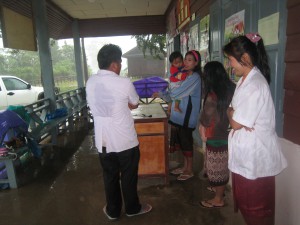
This is a great start to our CleanBirth.org Village Volunteer Training!
Global Handwashing Day!
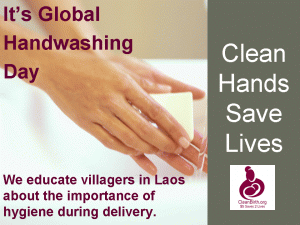
While handwashing before delivery may seem so obvious, it is has not been the historical practice.
We have Ignaz Philipp Semmelweis, a Hungarian doctor, to thank for changing that. In 1847, Semmelweis proved statistically that the incidence of puerperal fever, aka childbed fever, could be drastically reduced by enforcing hand washing standards for OB doctors and nurses.
Thanks Dr. Semmelweis! No go wash your hands!
Giving Birth Lao Style: Reasons for Homebirth
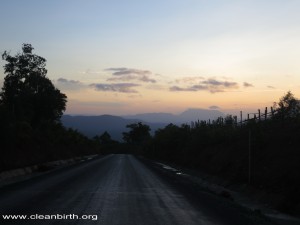
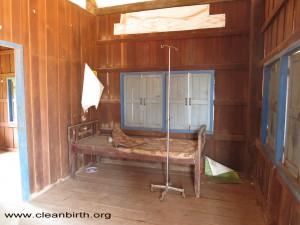


Wonderful that Vanphanom Sychareun et al have brought attention to the issues surrounding Laos’ high rate of maternal and infant deaths. Their August 2012 study “Reasons rural Laotians choose home deliveries over delivery at health facilities: a qualitative study” reveals the reasons for women’s preferences and gives basic recommendations.
The method was focus group discussions (FGD) and in-depth interviews with 71 mothers, husbands and grandmothers.
Reasons for homebirth:
1. Distance and cost of transport
2. Poor treatment/practices like horizontal birth position, episiotomies, no privacy, male staff
3. Desire for family/other children near
4. Desire for traditional birth practices: squatting position and “hot bed” (fire underbed) post-partum
What to do? Clinics should respect traditions/wishes of mothers. Further, mothers/family should be educated about high risk pregnancies so that they go to the clinic regardless of preference.
Giving Birth Lao Style: Part 2
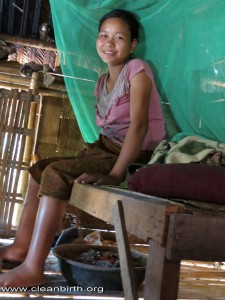
Our goal is to have a CleanBirth Volunteer in each village who will give women birth kits and explain the importance of having hygienic birth.
Since the Volunteers are from the same villages and share the same traditional beliefs and practices, we hope that they will convey the information in a culturally appropriate way.
Here are some of the traditional practices prevalent in Laos, according to the UNFPA report “Cultural Beliefs and Traditional Rituals about Childbirth Practices in Lao PDR.”
Preparation
Many families did prepare items like sarong, nappies, baby clothes, rope, ginger, herbal medicine, boiled water, wood, and bamboo bed. Yet others feared advanced preparation:
“I did not prepare anything for my baby. I was told by the elderly that I do not need to prepare anything in advance for my baby. It is believed that it will be a stillborn or death of the uterus.” (New mother, 24 years old)
During Labor
This report revealed that during labor mothers and husbands took care of the laboring mother, applying herbal medicine and eggs on the abdomen to make labor and delivery easier. Laboring women drank coconut milk.
“I used a herbal medicine called “Wane” which I put in the water, and I used this water to put on the head of my wife which could lead to an easy labor and reduce the pain during labor.”
(Husband, 32 years old)
Another husband said, during labor,
“I used the water “Nam Mon” [water that has been blessed with sacred words]
when I take a bath and it is believed that my wife will have an easy birth.” (Husband, 27 years old)
Cutting the Cord
Most umbilical cords were cut using a bamboo called “Mai Ka See” or razor blade. Some mentioned that they used alcohol to wash the razor and they used a black or white rope to tie the umbilical cord. After giving birth, the baby was given a bath and then placed on the bamboo bed beside the mother.
“I used to cut the umbilical cord using a sharp bamboo piece (tew may phai) because I did not have a delivery kit. I think it was clean and safe, and it was easy and available in our community. Based on my experiences, there were no cases of umbilical tetanus with the use of “tew mai phai”.” (Traditional Birth Attendant, 58 years old)
Postpartum
As discussed in yesterday’s post, postpartum practices are specific and culturally important.
“According to the ritual practice, the postpartum women had to sit on the banana leaf with salt for about 40 minutes in order for wounds to get heal quickly. After that, the women had to take a hot bath with herbal medicines before staying on the hot fire, drink about four pots of hot herbal medicine mixed with water, and also, take hot baths early in the morning without cleaning the skin for two weeks.”
(Mother, 50 years old)
Breastfeeding
Newborns are routinely given water after delivery out of fear that they baby is thirsty and to protect again jaundice and conjunctivitis. There was a belief that the mother did not have enough breast milk.
“After delivery, I suggested they feed the baby water or honey using clean cotton soaked with water or honey, which is then softly pressed onto the lips of the baby because the mother was not ready to breast feeding yet.” (TBA, 58 years old)
- « Previous Page
- 1
- …
- 23
- 24
- 25
- 26
- 27
- …
- 72
- Next Page »
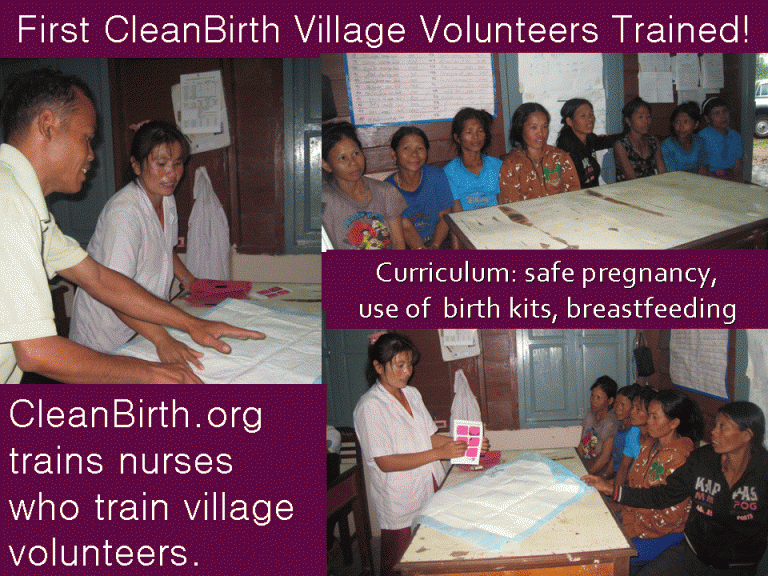
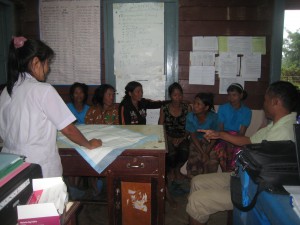 We just received the most exciting email. What was an idea in July has become a reality in October. Our partner in Laos, Our Village Association, with a local clinic in Ta-oiy Province have executed the first CleanBirth Volunteers Training!
We just received the most exciting email. What was an idea in July has become a reality in October. Our partner in Laos, Our Village Association, with a local clinic in Ta-oiy Province have executed the first CleanBirth Volunteers Training!